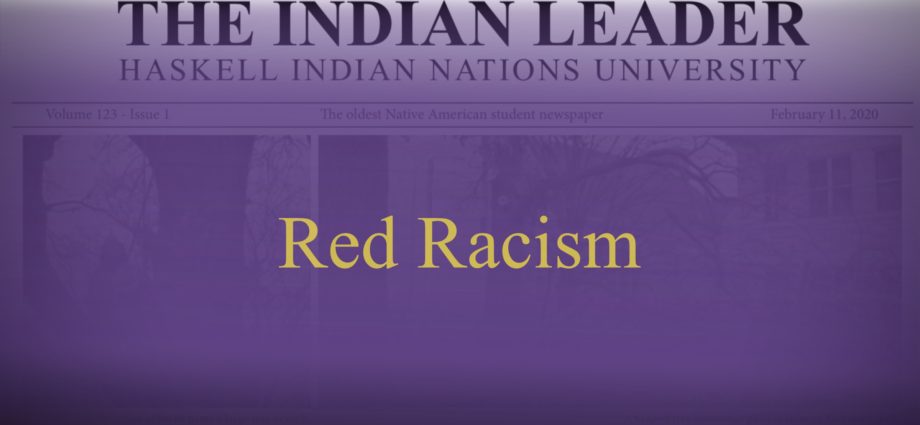Red racism is more than just a football game — it’s systemic and the attitudes of professional sports teams and fans are an indicator of disproportionate racial issues Native Americans face outside of the stadium.
According to the National Congress of American Indians’ website, the NCAI has been fighting against the use of “Indian” mascots since it launched its campaign efforts in 1968. Fifty-two years later, tensions are still high between Native American communities and Kansas City’s football franchise who just won the Super Bowl — fans were dressed in insulting costumes, including redface, and participating in demeaning behavior. Celebrating a win they’ve been waiting 50 years for, while we’re still waiting for ours…
The NCAI has seen the bigger picture surrounding mascots, something few fans are willing to see now. The publication Touchdown Wire credits fans saying: “…[they] have no issue with [the] controversial ‘Arrowhead chop’.” These fans fail to grasp that this single action is just part of a larger problem with Native Americans being negatively stereotyped, being dehumanized, and having culturally significant items and customs appropriated. This affects Native American communities in very measurable ways.
Erik Stegman and Victoria Phillips reported for the Center for American Progress that stereotypes created by these mascots create hostile environments for Native American children and these mascots negatively affect their self-esteem and mental health. Their article “Missing the Point” credits suicide as “…the second leading cause of death for [Native American] youth ages 15 to 24 — a rate that is 2.5 times higher than the national average.” This is the highest rate among all ethnic groups according to the NCAI.
These mascots are also affecting non-native students. Stegman and Phillips say that mascots create cultural bias from these derogatory and stereotyped images representing Native Americans; this affects views of Native Americans both past and present and affects students’ education surrounding Native People. This warping of historical contexts grows up from a playground prejudice to prejudice being fought in the courts, in the workplace, in the stadiums, and in the streets. Natives are the last race to still receive this type of overt racism in sports and it shows in racial statistics.
While racial disparities show up across the board, the most significant statistics are those relating to public safety. Public safety problems are largely caused by non-natives, a direct result of prejudice coming out of the stereotypes and dehumanization of Native people.
- Native Americans have a higher rate of death among police shootings than any other race according to CNN.
- Counties, consisting of a majority of Native land and subject to federal jurisdiction for homicide, are reported by the Department of Justice to have rates for homicides of Native American women up to 10 times higher than the national average.
- The DOJ’s 2008 report says Native American women are “significantly more likely to experience rape in their lifetime” at rates higher than both White and African American women.
- According to a 2016 report from Urban Indian Health Institute, only 0.02% of reported cases of Missing and Murdered Indigenous Women and Girls were logged into the DOJ system.
All acts of red racism are significant.

